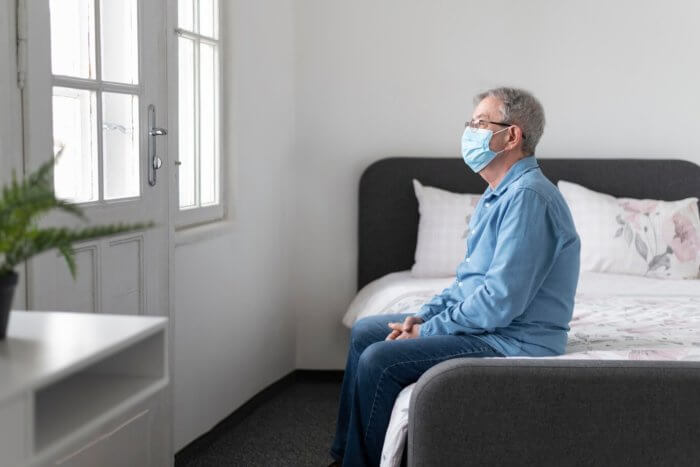How to Transition to an Assisted Living Community

Essential Tips for Assisted Living Transition
Making the transition to an assisted living community can be an intimidating process for some seniors. It is difficult to leave the home you know and likely have spent years making memories in. There are also often concerns about a loss of independence and individuality.
Many people lump all senior living facilities together as the same thing. Words like “assisted living” conjure images of the old stereotypical nursing homes with clinical rooms and an overall depressing atmosphere.
Today’s assisted living homes are nothing like that image. Many provide a vibrant, lively atmosphere in a residential environment that feels just like home. There’s a stronger focus on mental and social well-being than in decades past. Residents are encouraged to continue to explore the world, experience new things, and make new friends.
When you notice signs that an elderly person can’t live alone, it may be time to look into accommodations that provide more support. That’s where assisted living comes in. If you or a loved one have decided to make the move, then you should start preparing now.
The unknown can be scary. Learning about assisted living now will make the transition as smooth and low-stress as possible.
· Find a Community That is a Good Fit
Every assisted living community is unique. Some offer more recreation and entertainment while others may have more support options, like a memory unit for people with dementia. Others may be in a location that is more appealing, convenient, or comfortable.
That’s why you should explore all options to ensure that you find a retirement community that is a good fit. Explore websites, check out event calendars, and see if others have shared testimonials and reviews to get started.
Most will include a list of services so that you know what is included. This will help you build a list of possibilities. While cost is a factor, it shouldn’t be the only thing you look at when deciding where to spend your golden years.
· Schedule a Tour and Bring Your Questions
Experience the assisted living community for yourself by planning a tour. Facilities like MD Senior Living let you schedule a tour online. You can also call to arrange your visit and see if anyone will be available to show you around.
While at the facility, get a feel for the atmosphere. See if you can sample food from the menu and use this opportunity to chat with residents and staff. Getting to know the people you may live next to will help you adjust quickly when you move in.
· Begin the Downsizing Process Right Away
Downsizing can be a challenge both physically and mentally. Most of the time, seniors must offload many belongings so that they can move into assisted living accommodations. This is beneficial in the long run.
Getting rid of belongings can reduce stress. It means fewer items to clean and store. It also makes estates much easier to manage later when the time comes.
To ease this process, it is best to start downsizing well in advance of the move. Give yourself ample time to begin. Doing it in smaller portions will lessen the workload and emotional stress.
What you do with your items is up to you. You can discard anything that might be broken or of no value. Items can be given to friends and family as keepsakes or donated to help others. Some seniors even sell valuable items to increase their retirement funds.
· Help Loved Ones Let Go of Treasured Belongings
If you have a loved one who is going through this process, offer to help them organize their most precious items. If you are the senior making the move, it can help to ask someone you love and trust to assist.
Find your most treasured belongings and decide where you would like them to go. Chances are you won’t be able to keep everything. This is a good time to honor those around you by entrusting them with the things that mean the most to you.
This may be an ideal time to pass down the special furniture, jewelry, art, or other items that you would like to go to your children, grandchildren, or great-grandchildren. You can also discuss options when there isn’t someone in your family who might want to take something.
For example, antiques and older items may make a wonderful addition to a local museum. Items could also be donated to charities or organizations that the senior cares about. Having an extra set of eyes and hands available is a tremendous help when making hard decisions and figuring out how to get objects to their new homes safely.
· Choose Your Favorite Keepsakes to Bring Along
Moving into assisted living doesn’t mean getting rid of everything you own. Choose your favorite keepsakes and bring them along. These items can be used to dress up your room and make it feel more like your own.
Just keep in mind that there will be some limitations for larger items. You may not be able to fit a large couch or piano in your room, but a recliner or rocking chair may work. Art and photographs that can be hung on walls are also good choices.
· Ask About Services and Programs to Help New Residents
Find out if the assisted living community offers any services or programs for new residents. They may have something available to assist with a move-in day or to provide extra support as you adjust.
Mental health is an essential part of living well. This may be a good time to schedule visits with a therapist. This should be done as a preemptive step to protect your mental and emotional health. Even if you are feeling fine about the move now, you may experience moments of stress or difficulty. Having a professional available to help you work through those feelings will allow you to adjust more quickly.
Discover a Better Way for Seniors to Live
Aging can be difficult. We often lose the people we love and start to experience physical challenges. There are many reasons assisted living can be better than struggling alone for seniors. It allows them to live as independently as they safely can while having access to the support they may need as they get older.






Leave a Comment